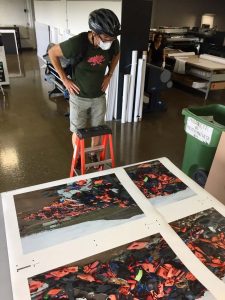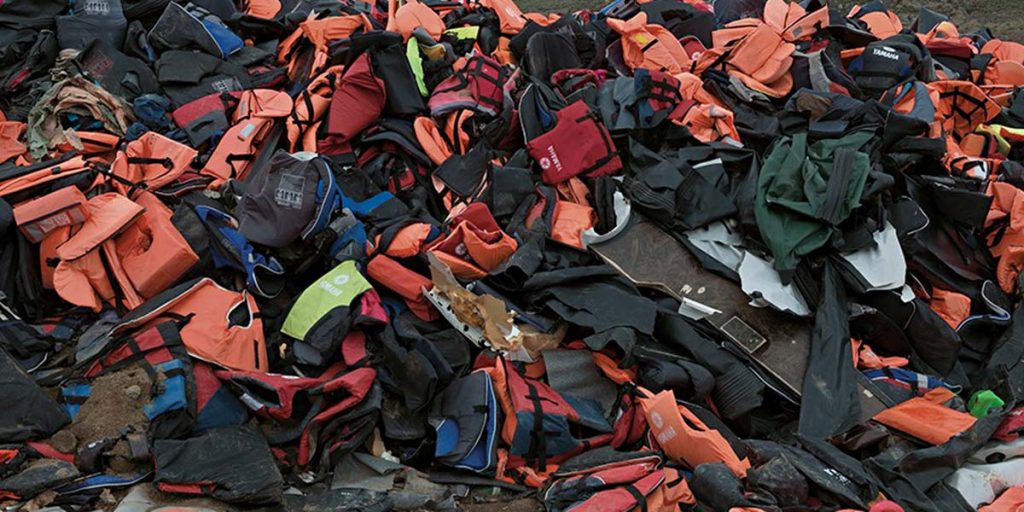The museum recently acquired a triptych of photographs by Canadian photographer Darren Ell. The images feature the piles of thousands of mostly orange-and-black life vests that had been abandoned at Molyvos on the island of Lesbos, Greece, by Syrian, Bengali, Yemeni, East African, and other refugees upon their arrival by boat from Turkey. Taken in March of 2016, the images are part of a series entitled Survive Refuge that documents the global refugee crisis at perhaps its most acute.


Ell’s documentary work uses portraiture, landscape, personal stories, and photo-journalism to explore political issues: Palestinians living under occupation, the struggle of political refugees in Canada, the consequences of the 2004 coup d’état in Haiti, the lives of new Canadians, the European migration crisis, refugees at the US-Mexico border, migrants fleeing Trump’s America, and the Covid-19 pandemic. His work has been exhibited widely, though thus far mostly in Canada, and has been published by the New York Times, Le Monde, al-Jazeera International, CBC Canada, La Presse, The National Post, Photo District News, and The National Film Board of Canada, among others.
In the triptych, the piles of life vests peter out into the distance where they link to the barren landscape of Lesbos, while the silhouette of a lone tree near the top of the hill in the background provides a modicum of relief and hope. The heavy sky is a far cry from the sunny tourist images of the Greek islands. In the foreground, the disembodied life jackets bear testimony to the sorry plight of the original users during their perilous crossing from Turkey, in search of a better life for themselves and their families. As a photographic document, the triptych strikes a deep chord within the viewer.
Apart from the human suffering, however, the images also draw attention to the broader geopolitical issues of how the migration crisis has been used to destabilize Europe and, especially, Greece. The roles of profiteering traffickers and ruthless NGOs in that process is often problematic as well. The triptych, then, allows us to bring attention to these timely issues right here in our teaching museum.
In recent years the increased focus on global contemporary art has brought our museum into a close conversation with some of the most compelling issues of our time. With this acquisition, the museum builds on its commitment to collect and exhibit works that engage meaningfully and forcefully with our increasingly global and diverse student body, and with our ever more inclusive academic curriculum. If this work sparks reactions, thoughts, feelings, and associations for you, then we would love to have you bring those into the conversation as well.
— Pieter Broucke, Associate Curator
